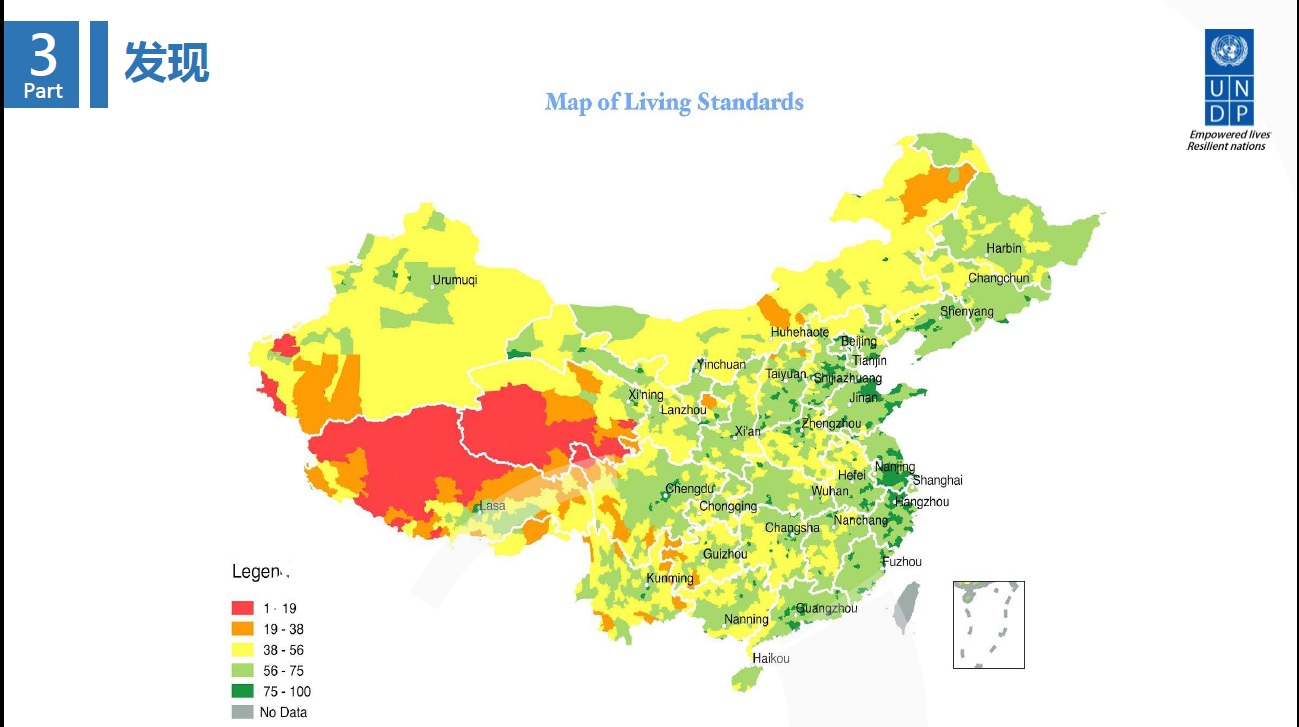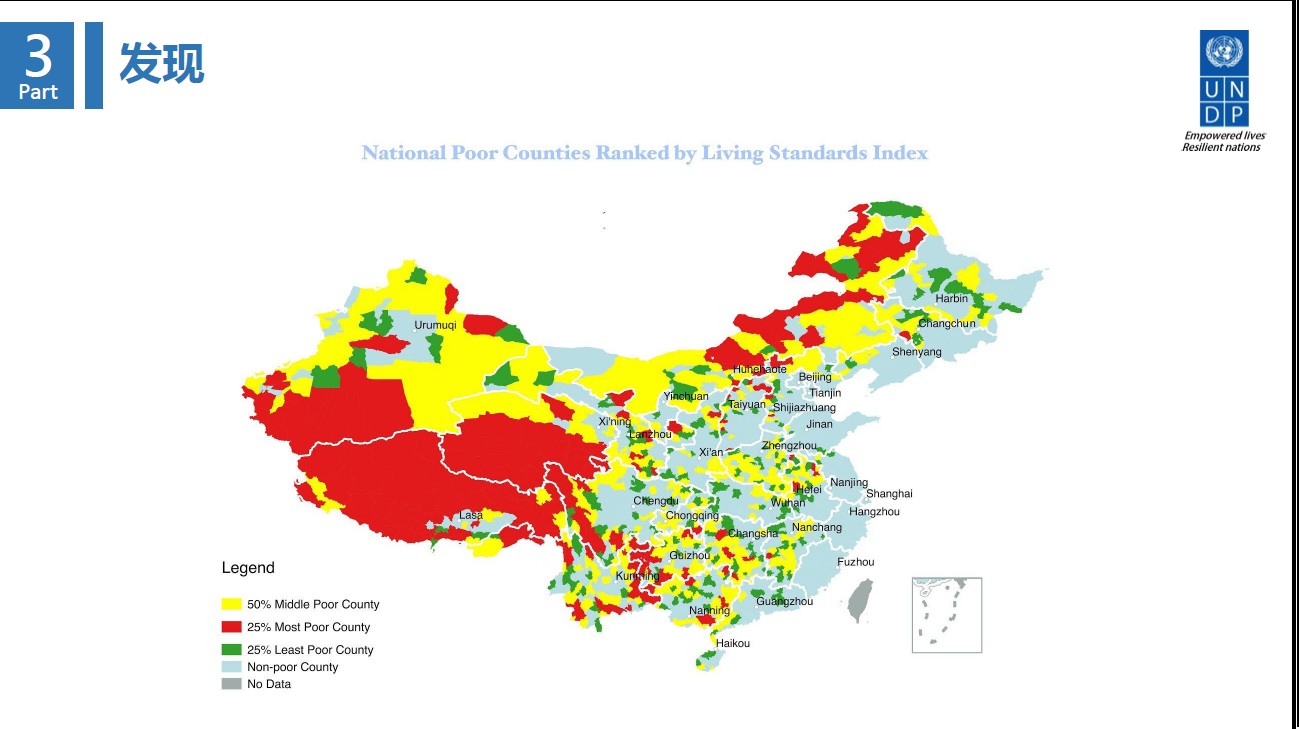


Map of Living Standards across China (Photo provided by UNDP)
Dynamic statistics that come courtesy of big data to measure poverty in China have been playing an increasingly significant role in targeted poverty reduction in the country, according to a report released on Oct. 17.
Put out in cooperation with Baidu, China’s largest search engine, the report highlights a measure called the Living Standard Dimension of the Human Development Index, which addresses the complex nature of poverty by selecting eight indicators to evaluate the provision of services in China’s 2,284 counties.
The report, entitled “The Living Standards Dimension of the Human Development Index: Measuring Poverty with Big Data in China,” was jointly assembled by Baidu and the United Nations Development Programme (UNDP), with the goal of assisting governments in their decision-making, according to UNDP.
“Big data provides an alternative tool for tackling development challenges, which, however, does not go without constraints. The real-time and dynamic nature of data inevitably leads to potential margin of error. This report touches on some of the weaknesses of using big data, but hopes to illustrate that, despite its limitations, it serves to complement the traditional household surveys that feed the national database,” said Patrick Haverman, deputy country director of UNDP in China.
The eight indicators used to analyze poverty in China include: access to water, access to sanitary toilets, access to indoor kitchens, access to living services, access to financial services, access to roads, mobile Internet coverage and nighttime light density.
The Living Standards lndex serves to support income-based measures of poverty, and will hopefully become a supplementary tool to assist policymakers, UNDP said at the press conference. The index ranks eastern China’s Zhejiang and Jiangsu provinces in first and second place respectively, followed by Beijing and Shanghai.
In general, the report demonstrates that 19 provinces, municipalities and autonomous regions rank above average, including 11 provinces and municipalities from China’s eastern coast and eight from the country’s center. Provinces and autonomous regions in the western part of China all rank below the national average.

National poor counties ranked by Living Standards Index (Photo provided by UNDP)
China has adopted the UN’s 2030 Agenda for Sustainable Development, including the agenda’s 17 sustainable development goals, which aim to end poverty in all forms by 2030.
China is striving to intensify its poverty reduction efforts and eliminate poverty within its borders by 2020, just before the centennial anniversary of the founding of the Communist Party of China.
According to a government paper titled "China's Progress in Poverty Reduction and Human Rights," issued on Oct. 17, China still had 55.75 million people living in poverty at the end of 2015, equivalent to the entire population of a medium-sized country.
The data collected from the report will be available in the form of an interactive map by the end of October. The map will allow users to zoom in on particular provinces to see how they are doing across all eight indicators, as well to pick one indicator and see its strengths and weaknesses across the country.

 Who Will Fit The Chinese Roles In Game Of Thrones?
Who Will Fit The Chinese Roles In Game Of Thrones? China's Hubei Shennongjia added to World Heritage List
China's Hubei Shennongjia added to World Heritage List Cute Dog At Fruit Stand Becomes Latest Internet Sensation
Cute Dog At Fruit Stand Becomes Latest Internet Sensation Top 10 livable Chinese cities
Top 10 livable Chinese cities The last primitive tribe in China
The last primitive tribe in China China's first intelligent security robot debuts in Chongqing
China's first intelligent security robot debuts in Chongqing A Total of 3,552 Subscribers Vanish In Two Days; YouTube Closes All Doors to Users’ Inquiries
A Total of 3,552 Subscribers Vanish In Two Days; YouTube Closes All Doors to Users’ Inquiries Out of this world! Futuristic UFO-shaped yacht has its own garden and a stunning underwater viewing deck
Out of this world! Futuristic UFO-shaped yacht has its own garden and a stunning underwater viewing deck An old tea house in Chengdu
An old tea house in Chengdu Furious Customer Crushes All the Buns from Vendor Just Because He Was Given the Wrong Flavor
Furious Customer Crushes All the Buns from Vendor Just Because He Was Given the Wrong Flavor